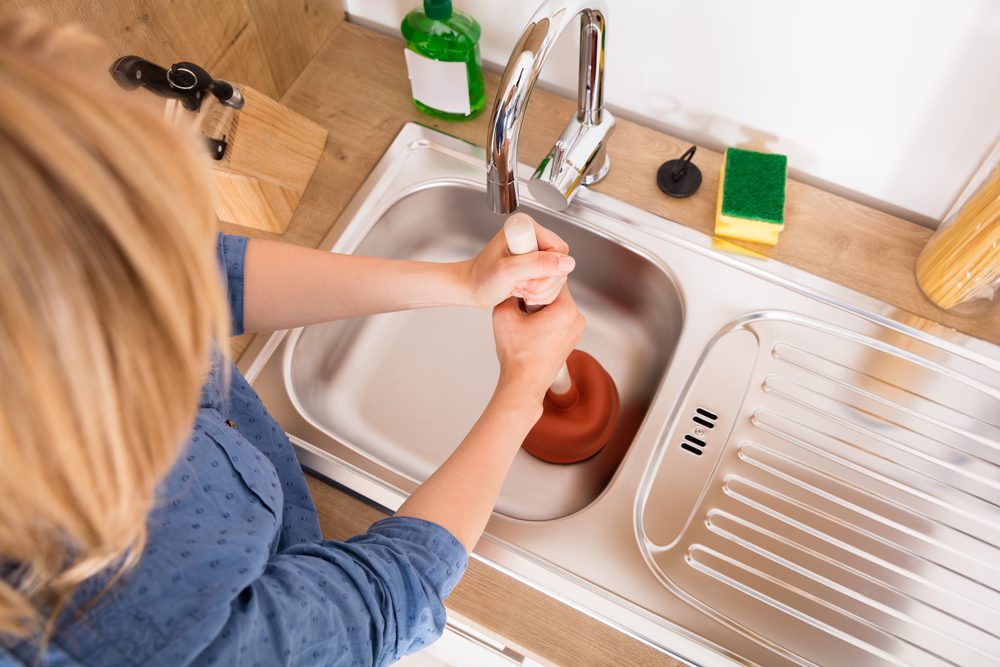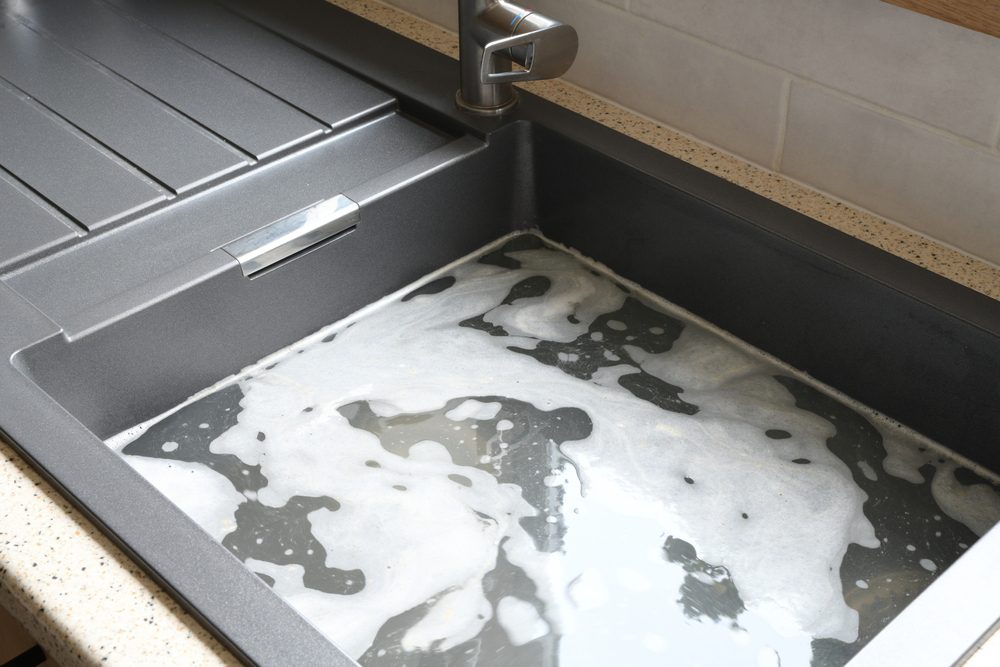Have you ever wondered how to fix a slow sink drain? We sure had, and if you also did, then this guide is for you! Instead of paying a plumber to solve a slow-draining sink, you may solve the issue quickly and simply while saving money by learning how to fix it yourself.
A sluggish drain is, for sure, one of the most common issues that can affect a sink. Slow sink drains can be caused by several factors, with the bathroom sink being the one that suffers from this problem most often.
Generally, soap scum accumulation and small blockages are the reasons behind a slow-draining sink. Due to frequent use, the pop-up stopper that is used to stop the sink from accumulating a lot of hair and debris might not be enough, and in this case, you may encounter problems like a slow-draining sink.
Read on and find out some of the best ways to fix a slow sink drain. Learn how to do it yourself and save some money!

1. Use a plunger
This is a classic, but most of the time, this is the way to fix a slow sink drain. It might be the first thing that crosses your mind, but hopefully it is one of the most efficient solutions.
Plungers do not always need to be used for total drain stoppages; they may be used for sluggish sink drains as well. Hair and dirt buildup in the pipe may be easily removed with a little plunging.
Before you plunge, make sure the plunger is working properly by covering the overflow in the sink with a rag or duct tape. In this way, a seal is created, and the suction that will eventually unblock your drain is possible.
2. Don’t forget about the P-Trap
Sometimes the blockage might be stubborn, and if this is the case, the last step before calling a professional is to remove and then clean the P-trap. All you have to do is look under the sink and open the bend-like “P”-shaped pipe.
The pipe’s U-shaped bend is an ideal spot for trash, debris from food, oil, and hair to accumulate and clog.
Before removing and cleaning the P-trap, you need to make sure that all you do is safe and properly done. For this, you need to shut off the sink’s water supply. After removing the drain pipe, you will need a bucket to collect any leftover water or debris. If you are unable to unscrew the slip nuts by hand, you may also require a wrench or channel lock pliers.
Unscrew the slip nuts, remove the reap by pulling it down, clean all of the gunk, and reinstall it. In short, this is the whole process and the only instructions you need to follow.
3. Try a zip-it tool
You might be surprised by how effective a basic zip-it tool is when you try to fix a slow sink drain. To restore the flow of the sink drain, you must first remove any accumulated hair and debris.
Now this is where the zip-it tool enters the scene. Using the zip-it tool is a rather simple method that takes only a few minutes to complete, and what is even more important is that this is a budget-friendly approach.
When hair and debris are trapped in the drain, they may be easily removed with the Zip-it tool. Since it is thin enough to fit through pop-up drains, you may use the Zip-it in a sink drain with or without a pop-up drain.
So, next time you need to fix a slow sink drain, don’t hesitate to use this basic tool.
4. Use a snake
A more professional method to fix a slow sink drain is to use a snake. This is a tool that you can buy from any local hardware store, and most of the time, it does its job flawlessly.
This is a method that you will most likely use in case you have a stubborn drain and any other methods are not working. The snake, which is also known as a plumbing snake, is a slender and flexible metal cable that is wound or unwound on a reel. Its end, which resembles a drill or corkscrew, can be used to loosen or poke blockages and remove them.
If you want to use such a tool, you don’t need to know how to use it beforehand because it is really simple. You can just take the snake and put it in the drain. If you suspect that the blockage is more serious, you will need to open the P-trap and put the snake directly into the pipe.
5. Clear the overflow
If the water in the sink accidentally rises too high, the function of the overflow opening is to direct it into the drain. This is the main function that is known to most people. Venting the drain while the sink is full of water is another important function. The air that enters the drain via the overflow helps make the drainage quicker.
Now what you should know is that the overflow opening is another spot that is a magnet for buildup and debris. This is important information you will need in case you want to fix a slow sink drain.
If you tried other methods and your sink is still draining slowly, cleaning the overflow might help. This is a good idea, and at times it might actually solve the problem.
6. Try a homemade drain cleaner
If your sink drains slowly, try adding 1/2 cup of baking soda to it. Add 1/2 cup vinegar after that. Give the mixture a few minutes to rest. To remove the blockage, rinse the mixture with hot water.
Once the bulky stuff has been removed, the drain pipes can be cleaned with this homemade drain cleaner. The grimy buildup inside the drain pipes can be broken down by the reaction that results from mixing two basic, low-cost home items.
Fixing the drain’s ability to flow freely might include clearing some of the buildup inside. Using a homemade drain cleaner is less expensive and prevents harsh chemicals from being added to the water source.

7. Take out the pop-up
The sink pop-up’s shape lets waste and buildup accumulate in it often. Removal and cleaning of the pop-up is another choice if you don’t have a Zip-it tool or if the tool isn’t able to remove all the dirt.
The drain beneath the sink is often equipped with a nut that secures pop-up drains. In order to remove the pop-up, uncover the pop-up nut behind the drain pipe beneath the sink. Reinstalling the pop-up once it has been cleaned allows it to be taken out of the sink drain.
This is an easy method and should be the first thing you try when you have to fix a slow sink drain. If this works, it means that there should not be any further problems with your sink.
If you need a plunger to fix a slow sink drain, this might be a good choice: Cuzlarmul Sink Plunger
You should also read: 10 Steps to Arrange Your Living Room for Holidays















